The power situation in rural India continues to remain poor with around one-third of the rural population without access to any form of electricity. The consequence of which is kerosene being used as a major source of lighting for un-electrified households as well as households with intermittent access to electricity in rural areas. While grid based electrification has been the most common approach, decentralized renewable energy options especially, solar PV systems have also been adopted as a cost effective mode of electrification. This paper presents the results of socio-technical assessment of solar photovoltaic interventions namely, solar home systems, solar mini-grid and solar AC pico-grids, which have been used to electrify selected villages in Sundarbans region of India. The study is focused on technical, financial, and institutional aspects along with the social impact assessment of PV based electrification in the Sundarbans region. The results of the study elucidate that, in general, the impacts of the solar PV solutions used for electrification have been largely positive, especially benefits of reduced kerosene consumption, ease in studying and cooking and reduced health effects. The study also finds that technology is not the only factor on which the viability of a program depends, but institutional and financial aspects also play a significant role. The need of the hour is to develop a strong institutional framework and enabling policies for achieving higher success rates in PV programs.
1.
Introduction
Stochastic homogenization is a subject broadly studied starting from '80 since the seminal papers by Kozlov [11] and Papanicolaou-Varadhan [18] who studied boundary value problems for second order linear PDEs. We prove here an abstract homogenization result for the graph of a random maximal monotone operator
where $x \in {{\mathbb{R}}^{n}}$ and $\omega$ is a parameter in a probability space $\Omega$. In the spirit of [10,Chapter 7], the random operator $\alpha_\varepsilon $ is obtained from a stationary operator $\alpha$ via an ergodic dynamical system $T_x:\Omega \to \Omega$
The aim of this paper is to extend existing results where $\alpha$ is the subdifferential of a convex function [21,24] to general maximal monotone operators and to provide a simple proof based on Tartar's oscillating test function method. The crucial ingredient in our analysis is the scale integration/disintegration theory introduced by Visintin [25]. Moreover, relying on Fitzpatrick's variational formulation of monotone graphs [8], which perfectly suits the scale integration/disintegration setting [26], in the proof we can directly exploit the maximal monotonicity, without turning to (stochastic) two-scale convergence [2,9,20], $\Gamma$-convergence [5,6], G-convergence [16,17], nor epigraph convergence [13,14]. An advantage of our approach is that we do not need to assume an additional compact metric space structure on the probability space $\Omega$. Moreover, the effective relation is obtained directly, i.e. without an intermediate two-scale problem, which often needs to be studied separately. We also obtain the existence of the oscillating test functions as a byproduct of scale disintegration, without having to study the auxiliary problem (see, e.g., [17,Section 3.2]).
The outline of the proof is the following: Let $X$ be a separable and reflexive Banach space, with dual $X'$, let $A_n:X \to X'$ be a sequence of monotone operators, and for every $n\in{\mathbb N}$ let $(x_n, y_n)\in X \times X'$ be a point in the graph of $A_n$, i.e., such that $y_n = A_n x_n$ for all $n \in {\mathbb N}$. Assuming that $(x_n, y_n) \rightharpoonup (x, y)$ in $X \times X'$ and that we already know the limit maximal monotone operator $A:X \to X'$, a classical question of functional analysis is:
A classical answer (see, e.g., [3]) is: If we can produce an auxiliary sequence of points on the graph of $A_n$, and we know that they converge to a point on the graph of $A$, that is, if there exist
then, denoting by $\langle y, x \rangle$ the duality pairing between $x\in X$ and $y\in X'$, by monotonicity of $A_n$
In order to pass to the limit as $n \to \infty$, since the duality pairing of weakly converging sequences in general does not converge to the duality pairing of the limit, we need the additional hypothesis
which, together with the weak convergence of $(x_n, y_n)$ and $(\xi_n, \eta_n)$, yields
By maximal monotonicity of $A$, if the last inequality is satisfied for all $(\xi, \eta)$ such that $\eta = A\xi$, then we can conclude that $(x, y)$ is a point of the graph of $A$, i.e., $y = Ax$. Summarizing, this procedure is based on
1. Existence and weak compactness of solutions $(x_n, y_n)$ such that $y_n = A_n x_n$ and $(x_n, y_n) \rightharpoonup (x, y)$;
2. A condition for the convergence of the duality pairing (3);
3. Existence of a recovery sequence (2) for all points in the limit graph.
The first step depends on the well-posedness of the application; the second step is ensured, e.g., by compensated compactness (in the sense of Murat-Tartar [15,23]), and, like the first one, it depends on the character of the differential operators that appear in the application, rather than on the homogenization procedure. In the present paper we focus on the third step: in the context of stochastic homogenization, we prove that the scale integration/disintegration idea introduced by Visintin [25], combined with Birkhoff's ergodic theorem (Theorem 2.4) yields the desired recovery sequence. We obtain an explicit formula for the limit operator $A$ through the scale integration/disintegration procedure with Fitzpatrick's variational formulation. With the notation introduced in (1), the outline of this procedure is the following:
where a) the random operator $\alpha(\omega)$ is represented through a variational inequality involving Fitzpatrick's representation $f(\omega)$; b) the representation is "scale integrated" to a $\omega$-independent effective $f_0$; c) a maximal monotone operator $\alpha_0$ is associated to $f_0$. In Theorem 3.8 we prove that $\alpha_0$ is the homogenised limit of $\alpha_\varepsilon $.
In Section 2.1 we review the properties of maximal monotone operators and their variational formulation due to Fitzpatrick. In Section 2.2 we recall the basis of ergodic theory that we need in order to state our first main tool: Birkhoff's Ergodic Theorem. Section 3 is devoted to the translation to the stochastic setting of Visintin's scale integration-disintegration theory, which paves the way to our main result, Theorem 3.8. The applications we provide in the last section are: Ohmic electric conduction with Hall effect (Section 4.1), and nonlinear elasticity, (Section 4.2).
2.
Notation and preliminaries
We use the notation $a\cdot b$ for the standard scalar product for vectors in ${{\mathbb{R}}^{n}}$. The arrows $\rightharpoonup$ and $\stackrel{\ast}{\rightharpoonup}$ denote weak and weak$^*$ convergence, respectively. As usual, $\mathcal D(D)$ stands for the space of $C^\infty$-functions with compact support in $D\subset {{\mathbb{R}}^{n}}$; its dual is denoted by $\mathcal D'(D)$.
2.1. Maximal monotone operators
In this section we summarize the variational representation of maximal monotone operators introduced in [8]. Further details and proofs of the statements can be found, e.g., in [27]. Let $B$ be a reflexive, separable and real Banach space; we denote by $B'$ its dual, by $\mathcal{P}(B')$ the power set of $B'$, and by $\langle y, x \rangle$ the duality pairing between $x\in B$ and $y \in B'$. Let $\alpha \colon B \rightarrow \mathcal{P}(B')$ be a set-valued operator and let
be its graph. (We will equivalently write $y \in \alpha(x)$ or $(x, y)\in \mathcal{G}_\alpha$.) The operator $\alpha$ is said to be monotone if
and strictly monotone if there is $\theta>0$ such that
We denote by $\alpha^{-1}$ the inverse operator in the sense of graphs, that is
The monotone operator $\alpha$ is said to be maximal monotone if the reverse implication of (4) is also fulfilled, namely if
An operator $\alpha$ is maximal monotone if and only if $\alpha^{-1}$ is maximal monotone. For any operator $\alpha \colon B \rightarrow \mathcal{P}(B')$, which is not identically $\emptyset$, we introduce the Fitzpatrick function of $\alpha$ as the function $f_\alpha \colon B \times B' \to {\mathbb{R}}$ defined by
As a supremum of a family of linear functions, the Fitzpatrick function $f_\alpha$ is convex and lower semicontinuous. Moreover, the following lemma holds true (see [8]).
Lemma 2.1. An operator $\alpha$ is monotone if and only if
while $\alpha$ is maximal monotone if and only if
In the case $B = B' = {\mathbb{R}}$, it is easy to compute some simple examples of Fitzpatrick function of a monotone operator:
1. Let $\alpha(x): = ax+b$, with $a>0, b\in {\mathbb{R}}$. A straightforward computation shows that
2. Let
Then
and in both cases $f_\alpha$ coincides with $g(x, y) = xy$ exactly on the graph of $\alpha$.
We define $\mathcal{F} = \mathcal{F}(B)$ to be the class of all proper, convex and lower semicontinuous functions $f \colon B\times B'\rightarrow \mathbb{R}\cup \{+\infty \}$ such that
We call $\mathcal F(B)$ the class of representative functions. The above discussion shows that given a monotone operator $\alpha$, one can construct its representative function in $\mathcal F(B)$, and viceversa, given a function $f\in \mathcal F(B)$, we define the operator represented by $f$, which we denote $\alpha_f$, by:
A crucial point is whether $\alpha_f$ is monotone (or maximal monotone, see also [26,Theorem 2.3]).
Lemma 2.2. Let $f\in \mathcal F(B)$, then
(i) the operator $\alpha_f$ defined by (6) is monotone;
(ii) the class of maximal monotone operators is strictly contained in the class of operators representable by functions in $\mathcal F(B)$.
Proof. (ⅰ) If $\mathcal G_{\alpha_f}$ is empty or reduced to a single element, then the statement is trivially satisfied. Let $x_1, x_2 \in B$, $y_i \in \alpha_f(x_i)$ for $i = 1, 2$, and assume, by contradiction, that $\langle y_2 - y_1, x_2 -x_1 \rangle < 0.$ Define $P_i: = (x_i, y_i)\in B \times B'$ and $g(x, y): = \langle y, x \rangle$. We compute
Since $f \geq g$ and $f(x_i, y_i) = g(x_i, y_i)$ for $i = 1, 2$, the last inequality implies
which contradicts the convexity of $f$.
(ⅱ) Maximal monotone operators are representable by Lemma 2.1. To see that the inclusion is strict, assume that $\alpha_f$ is maximal monotone. Let $(x_0, y_0)\in \mathcal G_{\alpha_f}$; since $f$ is proper there exists $c\in {\mathbb{R}}$ such that $c > f(x_0, y_0)$. The function
clearly belongs to $\mathcal F(B)$, but $\mathcal G_{\alpha_h}$ is strictly contained in $\mathcal G_{\alpha_f}$. Indeed by the maximality of $\alpha_f$
and thus $\alpha_h$ is not maximal.
Remark 1. When $\alpha = \partial \varphi$ for some proper, convex, lower semicontinuous function $\varphi:B \to {\mathbb{R}} \cup \{+\infty\}$, the definition of Fenchel transform yields
Thus, Fitzpatrick's representative function $f_\alpha$ generalizes $\varphi + \varphi^*$ to maximal monotone operators which are not subdifferentials. Remark that, even if $\alpha = \partial \varphi$, in general $f_\alpha \neq \varphi + \varphi^*$: for example, let $\alpha(x): = x$ in ${\mathbb{R}}$, then
We need to introduce also parameter-dependent operators. For any measurable space $X$ we say that a set-valued mapping $g\colon X \rightarrow \mathcal P(B')$ is measurable if for any open set $R\subseteq B'$ the set
is measurable.
Let $\mathcal B(B)$ be the $\sigma$-algebra of the Borel subsets of the separable and reflexive Banach space $B$, let $(\Omega, \mathcal{A}, \mu)$ be a probability space equipped with the $\sigma$-algebra $\mathcal{A}$ and the probability measure $\mu$. We define a random (maximal) monotone operator as $\alpha \colon B \times \Omega \rightarrow \mathcal{P}(B')$ such that
If $\alpha$ fulfills (7) and (8) then for any $\mathcal{A}$-measurable mapping $v:\Omega \rightarrow B$, the multivalued mapping $\omega \mapsto \alpha(v(\omega), \omega)$ is closed-valued and measurable. We denote by $\mathcal{F}(\Omega;B)$ the set of all measurable representative functions $ f: B \times B' \times \Omega \to {\mathbb{R}} \cup \{+\infty\}$ such that
(a) $f\colon B\times B' \times \Omega \rightarrow \mathbb{R} \cup \{+\infty\}$ is $\mathcal{B}(B \times B') \otimes \mathcal{A}$ -measurable,
(b) $f(\cdot, \cdot, \omega)$ is convex and lower semicontinuous for $\mu$-a.e. $\omega \in \Omega$,
(c) $f(x, y, \omega)\ge \langle y, x \rangle$ for all $(x, y) \in B\times B'$ and for $\mu$-a.e. $\omega \in \Omega$.
As above, $f \in \mathcal{F}(\Omega;B)$ represents the operator $\alpha = \alpha_f(\cdot, \omega)$ in the following sense:
Precisely, any measurable representative function $f\colon B \times B' \times\Omega \rightarrow \mathbb{R}\cup \{+\infty \}$ represents a closed-valued, measurable, monotone operator $\alpha \colon B \times \Omega \rightarrow\mathcal{P}(B')$, while any closed-valued, measurable, maximal monotone operator $\alpha$ can be represented by a measurable representative function $f$, for instance, by its Fitzpatrick function [26,Proposition 3.2].
2.2. Stochastic analysis
In this subsection we review the basic notions and results of stochastic analysis that we need in Section 3. For more details see [10,Chapter 7]. Let $(\Omega, \mathcal{A}, \mu)$ be a probability space, where $\mathcal{A}$ is a $\sigma$-algebra of subsets of $\Omega$ and $\mu$ is a probability measure on $\Omega$. Let $n \in {\mathbb N}$ with $n \geq 1$. An $n$-dimensional dynamical system $T_x$ on $\Omega$ is a family of mappings $T_x \colon \Omega \to \Omega$, with $x \in {{\mathbb{R}}^{n}}$, such that
(a) $T_0$ is the identity and $T_{x+y} = T_xT_y$ for any $x, y \in {{\mathbb{R}}^{n}}$;
(b) for every $x \in {{\mathbb{R}}^{n}}$ and every set $E \in \mathcal{A}$ we have $T_xE \in \mathcal{A}$ and
(c) for any measurable function $f \colon \Omega \to {\mathbb{R}}^m$, the function $\tilde f \colon {{\mathbb{R}}^{n}} \times \Omega \to {\mathbb{R}}^m$ given by
is measurable.
Given an $n$-dimensional dynamical system $T$ on $\Omega$, a measurable function $f$ defined on $\Omega$ is said to be invariant if $f(T_x\omega) = f(\omega)$ $\mu$-a.e. in $\Omega$, for each $x \in {{\mathbb{R}}^{n}}$. A dynamical system is said to be ergodic if the only invariant functions are the constants. The expected value of a random variable $f \colon \Omega \to {{\mathbb{R}}^{n}}$ is defined as
In the context of stochastic homogenization, it is useful to provide an orthogonal decomposition of $L^2(\Omega)$ into functions, whose realizations are curl-free and divergence-free, in the sense of distributions (see, e.g., [10,Section 7]). For $p \in [1, +\infty[$, Peter-Weyl's decomposition theorem [19] can be generalized to a relation of orthogonality between subspaces of $L^p(\Omega)$ and $L^{p'}(\Omega)$, where $p'$ denotes the conjugate exponent of $p$. Let $v\in L^p_{\rm loc}({{\mathbb{R}}^{n}};{{\mathbb{R}}^{n}})$. We say that $v$ is potential (or curl-free) in $\mathbb{R}^{n}$ if
and we say that $v$ is solenoidal (or divergence-free) in $\mathbb{R}^{n}$ if
Next we consider a vector field on $(\Omega, \mathcal{A}, \mu)$. We say that $f\in L^{p}(\Omega;{{\mathbb{R}}^{n}})$ is potential if $\mu$-almost all its realizations $x\mapsto f(T_{x}\omega)$ are potential. We denote by $L_{\rm pot}^{p}(\Omega;{{\mathbb{R}}^{n}})$ the space of all potential $f\in L^{p}(\Omega;{{\mathbb{R}}^{n}})$. In the same way, $f\in L^{p}(\Omega;{{\mathbb{R}}^{n}})$ is said to be solenoidal if $\mu$-almost all its realizations $x\mapsto f(T_{x}\omega)$ are solenoidal and we denote by $L_{\rm sol}^{p}(\Omega;{{\mathbb{R}}^{n}})$ the space of all solenoidal $f\in L^{p}(\Omega;{{\mathbb{R}}^{n}})$. In the following Lemma we collect the main properties of potential and solenoidal $L^p$ spaces (see [10,Section 15]).
Lemma 2.3. Define the spaces
The spaces $L_{\rm pot}^{p}(\Omega;{{\mathbb{R}}^{n}}), L_{\rm sol}^{p}(\Omega;{{\mathbb{R}}^{n}}), \mathcal{V}^{p}_{\rm pot}(\Omega;{{\mathbb{R}}^{n}}), \mathcal{V}^{p}_{\rm sol}(\Omega;{{\mathbb{R}}^{n}})$ are closed subspaces of $L^{p}(\Omega;{{\mathbb{R}}^{n}})$. If $u \in L_{\rm sol}^p(\Omega;{{\mathbb{R}}^{n}})$ and $v \in L_{\rm pot}^{p'}(\Omega;{{\mathbb{R}}^{n}})$ with $1/p+1/p' = 1$, then
and the relations
hold in the sense of duality pairing between the spaces $L^p(\Omega)$ and $L^{p'}(\Omega)$.
One of the most important results regarding stochastic homogenization is Birk-hoff's Ergodic Theorem. We report the statement given in [10,Theorem 7.2].
Theorem 2.4. (Birkhoff's Ergodic Theorem) Let $f \in L^1(\Omega;{\mathbb{R}}^m)$ and let $T$ be an $n$-dimensional ergodic dynamical system on $\Omega$. Then
for $\mu$-a.e. $\omega \in \Omega$, for any $K \subset {{\mathbb{R}}^{n}}$ bounded, measurable, with $|K|>0$.
Remark 2. Birkhoff's theorem implies that $\mu$-almost every realization $\tilde f_\varepsilon (x, \omega) = f(T_{x/\varepsilon }\omega)$ satisfies
Since this holds for every measurable bounded set $K \subset {{\mathbb{R}}^{n}}$, it entails in particular that if $f\in L^p(\Omega)$, then
In what follows, the dynamical system $T_x$ is assumed to be ergodic and $K\subset {{\mathbb{R}}^{n}}$ is bounded, measurable and $|K|>0$.
3.
Stochastic homogenization
Let be given a probability space $(\Omega, \mathcal{A}, \mu)$ endowed with an $n$-dimensional ergodic dynamical system $T_x \colon \Omega \to \Omega$, $x\in {{\mathbb{R}}^{n}}$. Let $p\in (1, +\infty)$, $p' = \frac{p}{p-1}$ and let $\alpha$ be a random maximal monotone operator, as in (7)-(9).
3.1. Stochastic scale integration/disintegration
We rephrase here Visintin's scale integration/disintegration [25,26] to the stochastic homogenization setting.
Remark 3. While most of this subsection's statements are Visintin's results written in a different notation, some others contain a small, but original contribution. Namely: Lemma 3.1 can be found in [26,Lemma 4.1], where the assumption of boundedness for $K$ is used to obtain the lower semicontinuity of the inf function. Since we prefer not to impose this condition, we independently proved the lower semicontinuity part, making use of the coercivity of $g$. Lemma 3.2 and Proposition 1 were taken for granted in [26], but we decided to write a proof for sake of clarity. Lemma 3.3 and Lemma 3.4 are essentially [26,Theorem 4.3] and [26,Theorem 4.4], cast in the framework of stochastic homogenization in the probability space $(\Omega, \mathcal{A}, \mu)$, instead of periodic homogenization on the $n$-dimensional torus. Theorem 3.5 collects other results of [26]. Lemma 3.6 is an original remark.
For every fixed $\omega\in\Omega$ let $f(\cdot, \cdot, \omega) \colon {{\mathbb{R}}^{n}} \times {{\mathbb{R}}^{n}} \to {\mathbb{R}} \cup \{+\infty\}$ be the Fitzpatrick representation of the operator $\alpha(\cdot, \omega)$. We assume the following coercivity condition on $f$: there exist $c>0$ and $k\in L^1(\Omega)$ such that for any $\xi, \eta\in {{\mathbb{R}}^{n}}$, for any $\omega \in \Omega$ it holds
We define the homogenised representation $f_0 \colon {{\mathbb{R}}^{n}} \times {{\mathbb{R}}^{n}} \to {\mathbb{R}} \cup \{+\infty\}$ as
Lemma 3.1. Let $X$ be a reflexive Banach space, let $K$ be a weakly closed subset of a reflexive Banach space. Let the function $g \colon X \times K \to {\mathbb{R}} \cup \{+\infty\}$ be weakly lower semicontinuous and bounded from below. If $g$ is coercive1, then the function $h\colon X \to {\mathbb{R}} \cup \{+\infty\}$ given by
1i.e., for all $M>0$ the set $\{(x, y)\in X \times K : g(x, y) \leq M\}$ is bounded.
is weakly lower semicontinuous and coercive. Moreover, if $g$ and $K$ are convex then $h$ is convex.
Proof. Let $x_j \rightharpoonup x \in X$, we must show that
Let
If $\ell = +\infty$, then (16) is trivially satisfied. On the other hand, since $g$ is bounded from below, then $\ell > -\infty$, and we can assume that $\ell \in {\mathbb{R}}$. By definition of inferior limit, there exists a subsequence of $\{x_j\}$ (not relabeled), such that $\lim_{j\to \infty}h(x_j) = \ell$. Up to extracting another subsequence, we can also assume that $h(x_j)\leq 2\ell$ for all $j\in \mathbb N$. Let $\varepsilon >0$ be fixed, by definition of infimum, for all $j\in \mathbb N$, there exists $y_j \in K$ such that
Therefore
By the coercivity assumption on $g$, we deduce that $y_j$ is bounded, we can therefore extract a subsequence $\{y_{j_k}\} \subset K$ such that $y_{j_k}\rightharpoonup y$. Since $K$ is weakly closed, then $y \in K$. We can now pass to the inferior limit in (17), using the lower semicontinuity of $g$
By arbitrariness of $\varepsilon >0$, this proves the weak lower semicontinuity of $h$. Assume now that $K$ is convex. Take $\lambda\in [0, 1]$, $x_1, x_2\in X$ and $y_1, y_2 \in K$. By convexity of $g$
Passing to the infimum with respect to $y_1, y_2\in K$ we conclude
Regarding the coercivity of $h$, denote
Let $M, \varepsilon >0$, for all $x\in B_M$ there exists $y\in K$ such that $g(x, y)\leq h(x)+\varepsilon \leq M+\varepsilon $, therefore $ B_M \subseteq A_{M+\varepsilon }$. Since $g$ is coercive, $A_{M+\varepsilon }$ is bounded and thus $B_M$ is bounded, i.e., $h$ is coercive.
In the proof of Proposition 1 we need the following estimate
Lemma 3.2. For all $p\in[1, +\infty[$ there exists $C>0$ such that
for all $\xi \in {{\mathbb{R}}^{n}}$, for all $u\in L^p(\Omega;{{\mathbb{R}}^{n}})$ such that $\mathbb E(u) = 0$.
Proof. Consider the operator
Clearly, $\Phi$ is linear and continuous. Therefore, there exists $C>0$ such that
Apply now the last inequality to $u(\omega) = \xi + \tilde u(\omega)$, with $\mathbb E(\tilde u) = 0$:
Proposition 1. For all $(\xi, \eta)\in {{\mathbb{R}}^{n}} \times {{\mathbb{R}}^{n}}$ there exists a couple $(\widetilde{u}, \widetilde{v})\in \mathcal V^p_{\rm sol}(\Omega;{{\mathbb{R}}^{n}}) \times \mathcal V^{p'}_{\rm pot}(\Omega;{{\mathbb{R}}^{n}})$ such that the infimum on the right-hand side of (15) is attained. Moreover, $f_0 \in \mathcal F({{\mathbb{R}}^{n}})$. In particular, it holds
Proof. Let $K: = \mathcal V^p_{\rm sol}(\Omega;{{\mathbb{R}}^{n}})\times \mathcal V^{p'}_{\rm pot}(\Omega;{{\mathbb{R}}^{n}})$. Then $K$ is weakly closed in $L^p(\Omega;{{\mathbb{R}}^{n}}) \times L^{p'}(\Omega;{{\mathbb{R}}^{n}})$ since it is closed and convex. Let $\xi, \eta\in {{\mathbb{R}}^{n}}$ be fixed, for any $(u, v) \in K$ let
We prove that the problem $\inf_KF_{\xi, \eta}$ has a solution applying the direct method of the Calculus of Variations. First, by (14), $\inf_KF_{\xi, \eta}>-\infty$. Then, if $(u_h, v_h)\subset K$ is a minimizing sequence for $F_{\xi, \eta}$, by the coercivity assumption (14), up to subsequences, $(u_h, v_h) \rightharpoonup (u, v)$ weakly in $L^p(\Omega;{{\mathbb{R}}^{n}}) \times L^{p'}(\Omega;{{\mathbb{R}}^{n}})$, therefore $(u, v)\in K$, since $K$ is weakly closed. Finally, $F_{\xi, \eta}$ is $L^p\times L^{p'}$-weakly lower semicontinuous since $f(\cdot, \cdot, \omega)$ is convex, lower semicontinuous, and bounded from below by an integrable function (14), therefore
This concludes the first part of the statement. We now want to show that $f_0\in \mathcal F({{\mathbb{R}}^{n}})$. Owing to (14) and Lemma 3.2, for all $\xi, \eta, (u, v)\in {{\mathbb{R}}^{n}}\times {{\mathbb{R}}^{n}} \times K$, there exists a constant $C>0$ such that
Thus, for any $M\ge 0$, the set
is bounded in ${{\mathbb{R}}^{n}} \times {{\mathbb{R}}^{n}} \times L^p(\Omega;{{\mathbb{R}}^{n}}) \times L^{p'}(\Omega;{{\mathbb{R}}^{n}})$. We are therefore in a position to apply Lemma 3.1 and to conclude that $f_0$ is convex and lower semicontinuous. Furthermore, let $(\widetilde{u}, \widetilde{v})\in K$ be a minimizer of $F_{\xi, \eta}$, using (12)
which yields the conclusion.
We denote by $\alpha_0$ the operator on ${{\mathbb{R}}^{n}}$ represented by $f_0$ through the usual relation
We refer to $\alpha_0$ as the scale integration of $\alpha$, since it is obtained through $f_0$, which is the scale integration of the Fitzpatrick representative $f$ of $\alpha$.
Lemma 3.3. Let $\xi, \eta\in {{\mathbb{R}}^{n}}$ be such that $\eta \in \alpha_0(\xi)$. Then, there exist $u\in L^p_{\rm sol}(\Omega;{{\mathbb{R}}^{n}})$ and $v\in L^{p'}_{\rm pot}(\Omega;{{\mathbb{R}}^{n}})$ such that
Moreover, $\mathbb{E}(u) = \xi$ and $\mathbb{E}(v) = \eta$, that is
Proof. Since $f_0$ represents $\alpha_0$, $\eta \in \alpha_0(\xi)$ implies
Take now $\widetilde{u} \in \mathcal V^p_{\rm sol}(\Omega;{{\mathbb{R}}^{n}})$ and $ \widetilde{v} \in \mathcal V^{p'}_{\rm pot}(\Omega;{{\mathbb{R}}^{n}})$ such that
Since $\mathbb E(\widetilde{u}) = \mathbb E(\widetilde{v}) = 0$,
from which we obtain
Let $u(\omega): = \xi+\widetilde{u}(\omega)$ and $ v(\omega): = \eta+\widetilde{v}(\omega)$. Since $f$ represents $\alpha$, (24) is equivalent to (20). Moreover, since $\mathbb E(u) = \xi$ and $\mathbb E( v) = \eta$, $\eta \in \alpha_0(\xi)$ implies also (21).
Lemma 3.3 is also referred to as scale disintegration (see [26,Theorem 4.4]), as it shows that given a solution $(\xi, \eta)$ to the integrated problem $\eta \in \alpha_0(\xi)$, it is possible to build a solution to the original problem $v(\omega) \in \alpha(u(\omega), \omega)$. The converse, known as scale integration (see [26,Theorem 4.3]) is provided by the next Lemma.
Lemma 3.4. Let $u\in L^p_{\rm sol}(\Omega;{{\mathbb{R}}^{n}})$ and $v\in L^{p'}_{\rm pot}(\Omega;{{\mathbb{R}}^{n}})$ satisfy
then
Proof. By (25) and (12)
On the other hand, by definition of $f_0$,
We conclude that $f_0(\mathbb E(u), \mathbb E(v)) = \mathbb E(u)\cdot \mathbb E(v)$, which yields (26).
How the properties of $\alpha$ and $f$ reflect on $\alpha_0$ and $f_0$ was thoroughly studied in [26]:
Theorem 3.5. If
$\bullet $
$f\in \mathcal F(\Omega, {{\mathbb{R}}^{n}})$ is uniformly bounded from below,
$\bullet $ there exists $(u, v)\in L^p(\Omega;{{\mathbb{R}}^{n}}) \times L^{p'}(\Omega;{{\mathbb{R}}^{n}})$ such that
$\bullet $ $f$ represents a maximal monotone operator for $\mu$-a.e. $\omega \in \Omega$ then $f_0$ represents a (proper) maximal monotone operator [26,Theorem 5.3]. Moreover, if $f$ is strictly convex, then
$\bullet $ $f_0$ is strictly convex [26,Lemma 5.4],
$\bullet $ the operators $\alpha_0$ and $\alpha_0^{-1}$ are both strictly monotone [26,Proposition 5.5] and if Dom$(\alpha_0)$ and Dom$(\alpha_0^{-1})$ are unbounded, then $\alpha_0$ and $\alpha_0^{-1}$ are coercive [26,Proposition 5.6].
In order to obtain strict monotonicity of $\alpha_0$ and $\alpha_0^{-1}$, by the next Lemma we provide an alternative to strict convexity of the Fitzpatrick function.
Lemma 3.6. Let $\alpha(\cdot, \omega):B \to B'$ be maximal and strictly monotone, and assume that its Fitzpatrick representation $f$ is coercive, in the sense of (14). Then its scale integration $\alpha_0$ is strictly monotone.
Proof. For all $\eta_i\in \alpha_0(\xi_i)$, $i = 1, 2$, by Lemma 3.3, there exist $u_i\in L^p_{\rm sol}(\Omega;{{\mathbb{R}}^{n}})$ and $v_i\in L^{p'}_{\rm pot}(\Omega;{{\mathbb{R}}^{n}})$ such that
and $\mathbb{E}(u_i) = \xi_i$, $\mathbb{E}(v_i) = \eta_i$. By (12), strict monotonicity of $\alpha$, and Jensen's inequality
3.2. Main result
Let $D\subset {{\mathbb{R}}^{n}}$ be a Lipschitz and bounded domain with $|D|>0$. We recall the following classical result.
Lemma 3.7 (Div-Curl lemma, [15]). Let $p\in]1, +\infty[$, let $v^n, v \in L^{p'}(D;{\mathbb{R}}^m)$ and $u^n, u \in L^p(D;{\mathbb{R}}^m)$ be such that
In addition, assume that
Then
We are now ready to prove our main result concerning the stochastic homogenization of a maximal monotone relation.
Theorem 3.8. Let $(\Omega, \mathcal{A}, \mu)$ be a probability space with an $n$-dimensional ergodic dynamical system $T_x:\Omega \to \Omega$, $x\in{{\mathbb{R}}^{n}}$. Let $D\subset {{\mathbb{R}}^{n}}$ be a bounded domain, let $p \in]1, +\infty[$. Let $\alpha: {{\mathbb{R}}^{n}} \times \Omega \to \mathcal P({{\mathbb{R}}^{n}})$ be a closed-valued, measurable, maximal monotone random operator, in the sense of (7)-(9).
Let $f$ be a Fitzpatrick representation of $\alpha$, as in (10). Let $f$ satisfy (14) and assume that for $\mu$-a.e. $\omega \in \Omega$ and $\varepsilon \geq 0$ there exists a couple
such that
Then, for $\mu$-a.e. $\omega \in \Omega$
where $\alpha_0$ is the maximal monotone operator represented by the homogenized representation $f_0 \colon {{\mathbb{R}}^{n}} \times {{\mathbb{R}}^{n}} \to {\mathbb{R}} \cup \{+\infty\}$ defined by
Proof. By Lemma 3.3 for all $\xi, \eta\in {{\mathbb{R}}^{n}}$ such that $\eta \in \alpha_0(\xi)$ there exist $u\in L^p_{\rm sol}(\Omega;{{\mathbb{R}}^{n}})$ and $v\in L^{p'}_{\rm pot}(\Omega;{{\mathbb{R}}^{n}})$ such that $\mathbb{E}(u) = \xi$, $\mathbb{E}(v) = \eta$, and
Define the stationary random fields $u_\varepsilon, v_\varepsilon \colon D\times \Omega \to {{\mathbb{R}}^{n}}$ as
For $\mu$-a.e. $\omega \in \Omega$
Equation (30) implies
By Birkhoff's Theorem (and (13), in particular), for $\mu$-a.e. $\omega \in \Omega$ we have
Since $\alpha$ is monotone, by (28c) and (31), for $\mu$-a.e. $\omega \in \Omega$
for any $\phi\in C_c^\infty(D)$ with $\phi\ge 0$. Since $u_\varepsilon$ is solenoidal and $v_\varepsilon$ is potential, by (28a)
By (28b), (32), and Lemma 3.7, we can thus pass to the limit as $\varepsilon \to 0$ in (33):
Since the last inequality holds for all nonnegative $\phi\in C_c^\infty(D)$, it holds also pointwise, for almost every $x \in D$:
To conclude, since $\mathbb{E}(u) = \xi$, $\mathbb{E}(v) = \eta$ are arbitrary vectors in $\mathcal G_{\alpha_0}$, the maximal monotonicity of $\alpha_0$ implies that
for a.e. $x\in D$, $\mu$-a.e. $\omega\in \Omega$.
Remark 4. In this section's results, the function spaces $L^p_{\rm sol}(\Omega)$ and $L^{p'}_{\rm pot}(\Omega)$ can be generalized to a couple of nonempty, closed and convex sets
such that
Furthermore, Proposition 1 and Lemma 3.3 remain valid if the previous equality is replaced by the inequality
4.
Applications
4.1. The Ohm-Hall model
In this subsection we address the homogenization problem for the Ohm-Hall model for an electric conductor. For further information about the Ohm-Hall effect we refer the reader to [1,pp. 11-15], [12,Section 22] and we also follow [26] for the suitable mathematical formulation in terms of maximal monotone operators. We consider a non-homogeneous electric conductor, that occupies a bounded Lipschitz domain $D \subset {\mathbb{R}}^3$ and is subjected to a magnetic field. We assume that the electric field $E$ and the current density $J$ fulfill the constitutive law
where $\alpha(\cdot, x):{\mathbb{R}}^3 \mapsto {\mathbb{R}}^3$ is a maximal monotone mapping for a.e. $x\in D$, $B$ is the magnetic induction field, $h$ is the (material-dependent) Hall coefficient, and $E_a$ is an applied electromotive force. We deal with a stationary system and thus we couple (34) with the Faraday law and with the stationary law of charge-conservation:
where the vector field $g:D \to {\mathbb{R}}^3$ is prescribed. Following [26], we assume that $h, B, E_a$ are given and we define the maximal monotone operator $\beta(\cdot, x):{\mathbb{R}}^3 \mapsto {\mathbb{R}}^3$ as
A single-valued parameter-dependent operator $\beta$ is strictly monotone uniformly in $x$, if there exists $\theta>0$ such that for a.e. $x\in D$
The following existence and uniqueness result is a classical consequence of the maximal monotonicity of $\alpha$ (see, e.g., [22,26]).
Theorem 4.1. Let $D \subset {\mathbb{R}}^3$ be a bounded Lipschitz domain. Let $\{\beta(\cdot, x)\}_{x\in D}$ be a family of single-valued maximal monotone operators on ${\mathbb{R}}^3$. Assume moreover that there exist constants $a, c>0$ and $b\geq 0$ such that for a.e. $x\in D, \, \forall v \in {\mathbb{R}}^3$
Let $g \in L^2(D;{\mathbb{R}}^3)$ be given, such that $div\, g = 0$, distributionally. Then, there exists $E, J\in L^2(D;{\mathbb{R}}^3)$ such that
and, denoting by $\nu$ the outward unit normal to $\partial D$,
Moreover, if $\beta$ is strictly monotone uniformly in $x\in D$, then the field $J$ is uniquely determined, while if $\beta^{-1}$ is strictly monotone uniformly in $x\in D$, then the field $E$ is uniquely determined.
Remark 5. Conditions (40)-(41) have to be intended in the weak sense -see below -while (42) holds in $H^{-1/2}(\partial D;{\mathbb{R}}^3)$. Note that, according to (40), the divergence of $g$ also vanishes.
Let $(\Omega, \mathcal{A}, \mu)$ be a probability space endowed with a 3-dimensional ergodic dynamical system $T_x \colon \Omega \to \Omega$, with $x\in {\mathbb{R}}^3$. Let $\{\alpha(\cdot, \omega)\}_{\omega\in \Omega}$ be a family of maximal monotone operators on ${\mathbb{R}}^3$, and let
For any $J \in {\mathbb{R}}^3$ and for any $(x, \omega)\in D\times\Omega$ let
In order to apply the scale integration procedure, we assume that
moreover, to ensure uniqueness of a solution $(E, J)$, we assume that
As in the previous section $\beta_0$ stands for the maximal monotone operator represented by $f_0$ given by (15). For any $\varepsilon >0$ define
Then $\{\beta_\varepsilon (\cdot, x, \omega)\}_{(x, \omega)\in D\times \Omega}$ is a family of maximal monotone operators on ${\mathbb{R}}^3$. Let $g_\varepsilon \in L^2(D\times \Omega;{\mathbb{R}}^3)$ with $g_\varepsilon \rightharpoonup g$ in $L^2(D;{\mathbb{R}}^3)$ for some $g \in L^2(D;{\mathbb{R}}^3)$, for $\mu$-a.e. $\omega\in\Omega$; assume that
We are ready to state and prove the homogenization result for the Ohm-Hall model.
Theorem 4.2. Assume that (43)-(47) are fulfilled. Then
1. For $\mu$-a.e. $\omega\in\Omega$, for any $\varepsilon >0$ there exists $(E_\omega^\varepsilon, J_\omega^\varepsilon)\in L^2(D;{\mathbb{R}}^3) \times L^2(D;{\mathbb{R}}^3)$ such that
2. There exists $(E, J)\in L^2(D;{\mathbb{R}}^3) \times L^2(D;{\mathbb{R}}^3)$ such that, up to a subsequence,
as $\varepsilon \to0$, weakly in $L^2(D;{\mathbb{R}}^3)$.
3. The limit couple $(E, J)$ is a weak solution of
Proof. 1. Assumption (46) implies that $\beta$ is single valued and that almost every realization $(x, v)\mapsto \beta(v, T_x\omega)$ satisfies the boundedness and coercivity assumptions (36) and (37). Therefore, by Theorem 4.1 for almost any $\omega\in\Omega$ and for any $\varepsilon >0$ problem (48)-(51) has a unique solution.
2. Let $\omega\in \Omega$ be fixed. By (38) the families $\{E_\omega^\varepsilon\}_\varepsilon $ and $\{J_\omega^\varepsilon\}_\varepsilon $ are weakly relatively compact in $L^2(D;{\mathbb{R}}^3)$, therefore, there exist a subsequence $\varepsilon_n \to 0$ and a couple $(E_\omega, J_\omega)\in L^2(D;{\mathbb{R}}^3) \times L^2(D;{\mathbb{R}}^3)$ satisfying (52). A priori, $(E_\omega, J_\omega)$ depends on $\omega\in \Omega$.
3. The weak formulation of (49)-(51) is:
for all $\phi\in \{H^1(D;{\mathbb{R}}^3): \phi \times \nu = 0 \text{ on }\partial D\}$, for all $\psi\in H^1_0(D)$. Passing to the limit in (57), one gets
which is exactly the weak formulation of (54)-(56). Equations (49) and (50) imply that $\{E_\omega^\varepsilon\}_\varepsilon $ and $\{J_\omega^\varepsilon\}_\varepsilon $ satisfy also the div-curl compactness condition (28a). Therefore, we can apply the abstract stochastic homogenization Theorem 3.8, which yields
We have thus proved that $(E_\omega, J_\omega)$ is a weak solution of (53)-(56). In order to conclude we have to eliminate the dependence on $\omega\in \Omega$.
4. By Lemma 3.6 and assumption (46), $\beta_0$ and $\beta_0^{-1}$ are strictly monotone, and therefore (53)-(56) admits a unique solution. Thus, $(E, J): = (E_\omega, J_\omega)$ is independent of $\omega \in \Omega$.
4.2. Nonlinear elasticity
Another straightforward application of the homogenization theorem 3.8 is given in the framework of deformations in continuum mechanics (see, e.g., [4,Chapter 3]). Elastic materials are usually described through the deformation vector $u:D\times(0, T) \to {\mathbb{R}}^3$ and the stress tensor $\sigma:D\times(0, T) \to {\mathbb{R}}^{3 \times 3}_s$. Here $D\subset {\mathbb{R}}^3$ is the spatial domain and ${\mathbb{R}}^{3 \times 3}_s$ the space of symmetric $3\times 3$ matrices. We assume the following constitutive relation relating stress and deformation:
where $\beta(\cdot, x):{\mathbb{R}}^{3\times 3} \mapsto {\mathbb{R}}^{3\times 3}$ is a (single-valued) maximal monotone mapping for a.e. $x\in D$. We couple (58) with the conservation of linear momentum:
where $\rho$ is the density and $F$ represents the external forces. For sake of simplicity, we choose to deal with the stationary system only and we set $\rho\partial_t^2 u = 0$.
The following existence and uniqueness result is a classical consequence of the maximal monotonicity of $\beta$ (see, e.g., [7,22]).
Theorem 4.3. Let $D \subset {\mathbb{R}}^3$ be a bounded Lipschitz domain. Let $\{\beta(\cdot, x)\}_{x\in D}$ be a family of single-valued maximal monotone operators on ${\mathbb{R}}^{3\times 3}$ that satisfy (36) and (37). Let $F \in L^2(D;{\mathbb{R}}^3)$ be given. Then, there exists $\sigma\in L^2(D;{\mathbb{R}}^{3\times 3})$ and $u\in H^1_0(D;{\mathbb{R}}^3)$ such that
and, denoting by $\nu$ the outward unit normal to $\partial D$,
Moreover, if $\beta$ is strictly monotone uniformly in $x\in D$, then $u$ is uniquely determined, while if $\beta^{-1}$ is strictly monotone uniformly in $x\in D$, then $\sigma$ is uniquely determined.
As above, we consider a family of maximal monotone operators $\{\beta(\cdot, \omega)\}_{\omega\in \Omega}$ on ${\mathbb{R}}^{3\times 3}$, $\beta_0$ stands for the maximal monotone operator represented by $f_0$, and for any $\varepsilon >0$
defines a family of maximal monotone operators on ${\mathbb{R}}^{3\times 3}$. Let $F_\varepsilon \in L^2(D\times \Omega;{\mathbb{R}}^3)$ with $F_\varepsilon \rightharpoonup F$ in $L^2(D;{\mathbb{R}}^3)$ for some $F \in L^2(D;{\mathbb{R}}^3)$, for $\mu$-a.e. $\omega\in\Omega$. The correspondent homogenization theorem is the following.
Theorem 4.4. Assume that (45) and (46) are fulfilled. Then
1. For $\mu$-a.e. $\omega\in\Omega$, for any $\varepsilon >0$ there exist $(u_\omega^\varepsilon, \sigma_\omega^\varepsilon)\in H^1_0(D;{\mathbb{R}}^3) \times L^2(D;{\mathbb{R}}^3)$ such that
2. There exist $(u, \sigma)\in H^1_0(D;{\mathbb{R}}^3) \times L^2(D;{\mathbb{R}}^3)$ such that, up to a subsequence,
as $\varepsilon \to0$, weakly in $H^1(D;{\mathbb{R}}^3)$ and $L^2(D;{\mathbb{R}}^3)$, respectively.
3. The limit couple $(u, \sigma)$ is a weak solution of
Proof. Steps 1. and 2. follow exactly as in the proof of Theorem 4.2.
3. The weak formulation of (64)-(65) is the following:
for all $\phi\in H^1_0(D)$. Passing to the limit as $\varepsilon \to 0$, one gets
which is exactly the weak formulation of (68)-(69). Equation (64) and estimate (59) imply that $\{\sigma_\omega^\varepsilon\}_\varepsilon $ and $\{\nabla u_\omega^\varepsilon\}_\varepsilon $ satisfy also the div-curl compactness condition (28a)
Therefore, we can apply the abstract stochastic homogenization Theorem 3.8, (with $\sigma$ in place of $J$ and $\nabla u$ in place of $E$), which yields
Finally, the strict monotonicity of the limit operators $\beta_0$ and $\beta_0^{-1}$ yields uniqueness and therefore independence of $\omega$ for the solution $(u, \sigma)$.
Acknowledgments
We would like to thank the anonymous referees for their valuable comments and remarks.











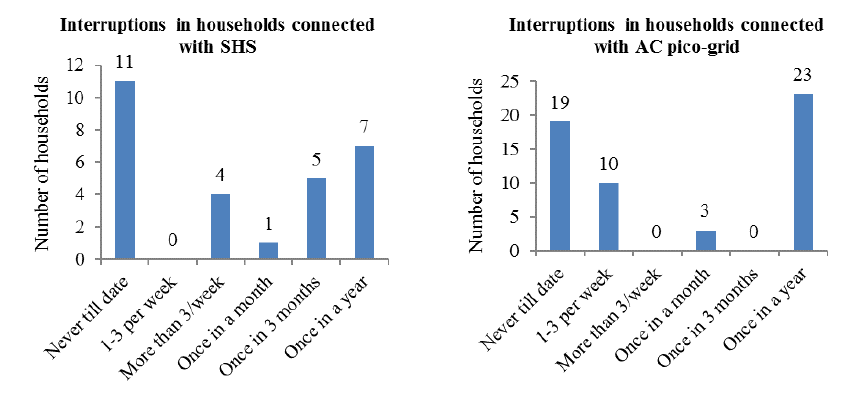
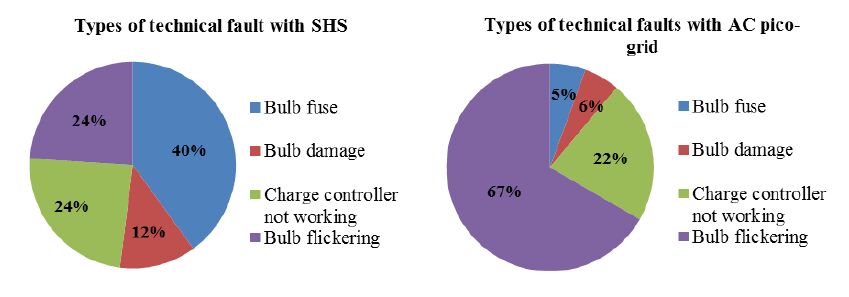
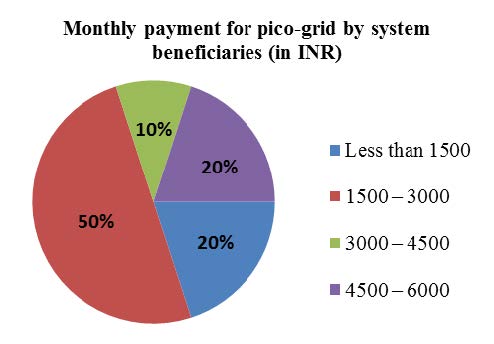
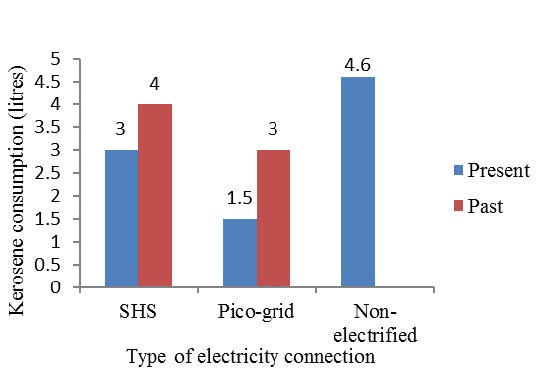

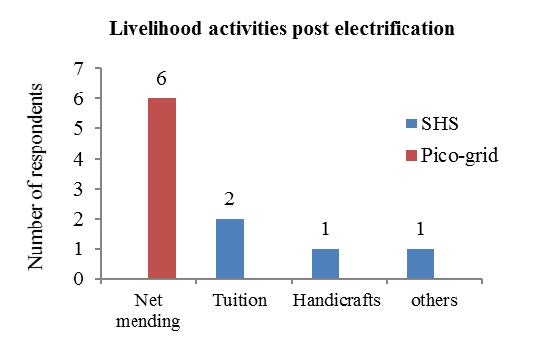
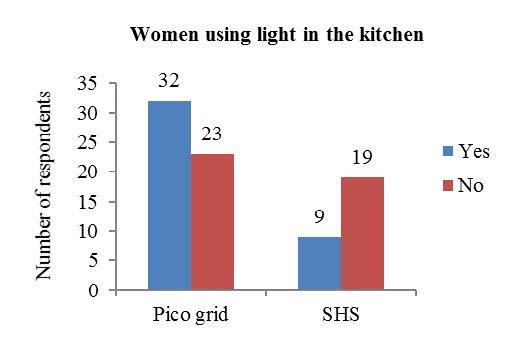

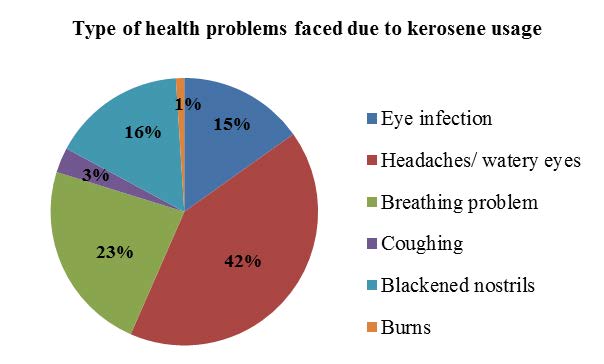
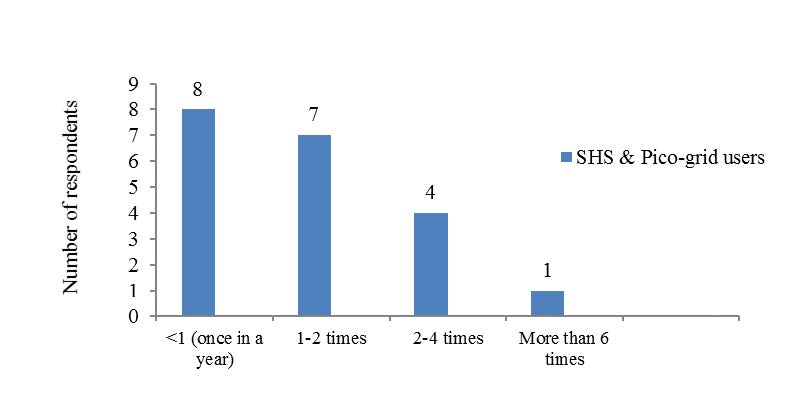
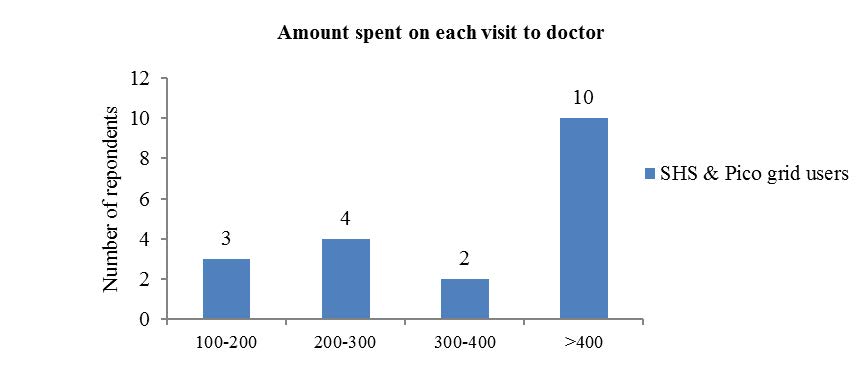
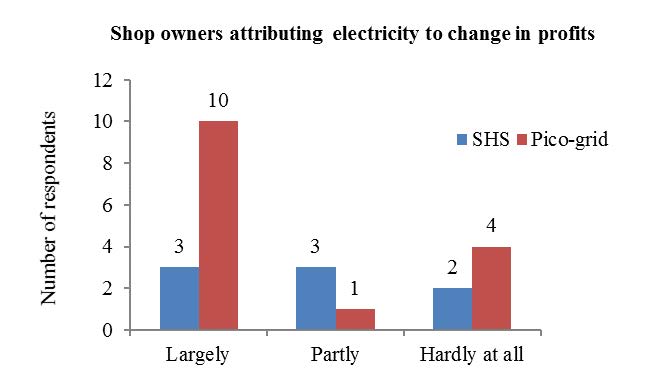
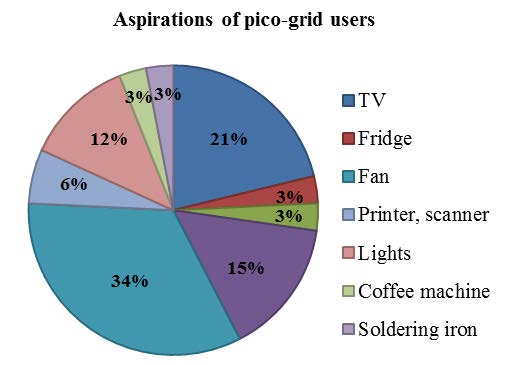



 DownLoad:
DownLoad: